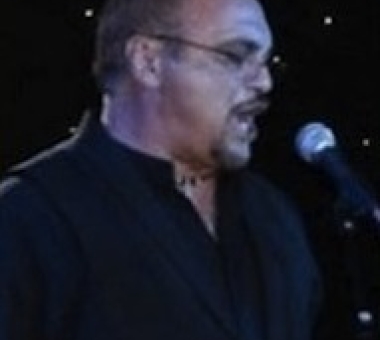Stories of Hope and Recovery

Jim Sparacino
Knowing the Options for Stroke Prevention Has Jim Singing a New Tune
While moving band equipment before one of his many performances, Jim Sparacino began to feel light-headed. He had become accustomed to feeling this way over the past few months.
Jim, a lead singer in a nine-piece band and frequent national anthem soloist at Pittsburgh Steelers,’ Penguins,’ and Pirates games, became increasingly dizzy and sat with his head between his legs. A hotel employee passing by saw Jim’s face turn an ashy color and suspected he was having a heart attack. An ambulance arrived at the hotel moments later.
Upon arriving at the hospital, interventional cardiologist Tony G. Farah, MD, FSCAI, chief medical officer and director of the cardiac catheterization laboratories at Allegheny General Hospital in Pittsburgh, found Jim’s heart in good condition. However, tests demonstrated reduced blood flow to Jim’s brain and a 94% blockage in his left carotid artery. Jim was told that he would need to undergo a surgical procedure called carotid endarterectomy to prevent a stroke from occurring.
A few days before Jim’s scheduled surgery, Dr. Farah learned that Jim was a singer. This was a new and important piece of information that ultimately changed the course of Jim’s treatment. Performing surgery would require the doctor to move Jim's vagus nerve—a technique that can cause injury to the nerve and result in vocal cord paralysis.
Upon hearing that Jim’s voice was his career, Dr. Farah met with Jim to discuss another treatment option, carotid angioplasty, and stenting, a procedure that has been studied in many patients and is as safe and effective as surgical options
“Dr. Farah told me there was a chance performing open-neck surgery could damage my vocal cords for good,” said Jim. “I told him that singing is how I make my living, and I didn’t want to take any risks.”
Days later, Jim underwent the stenting procedure, which is done by inserting a catheter through an artery in the groin and threading it to the neck, where a balloon is inflated to compress the plaque, and a stent is inserted to prevent the plaque from re-expanding.
“The day after the procedure, I went back to my everyday activities,” said Jim. “I could hardly believe I had undergone a lifesaving procedure the previous day.”
Since the procedure, Jim has no longer experienced light-headedness. In addition, he believes his cognitive thinking skills have greatly improved.
“As strange as it might sound, my poker game has improved since the stenting procedure,” said Jim. “In general I think clearer now—I think it’s all the extra blood getting to my brain!”
Jim advises others to be aware of new aches and pains, no matter how minor they seem, and see their doctors as soon as they experience any warning signs of stroke.